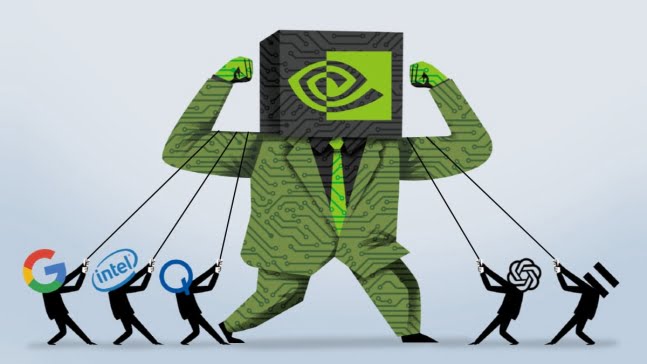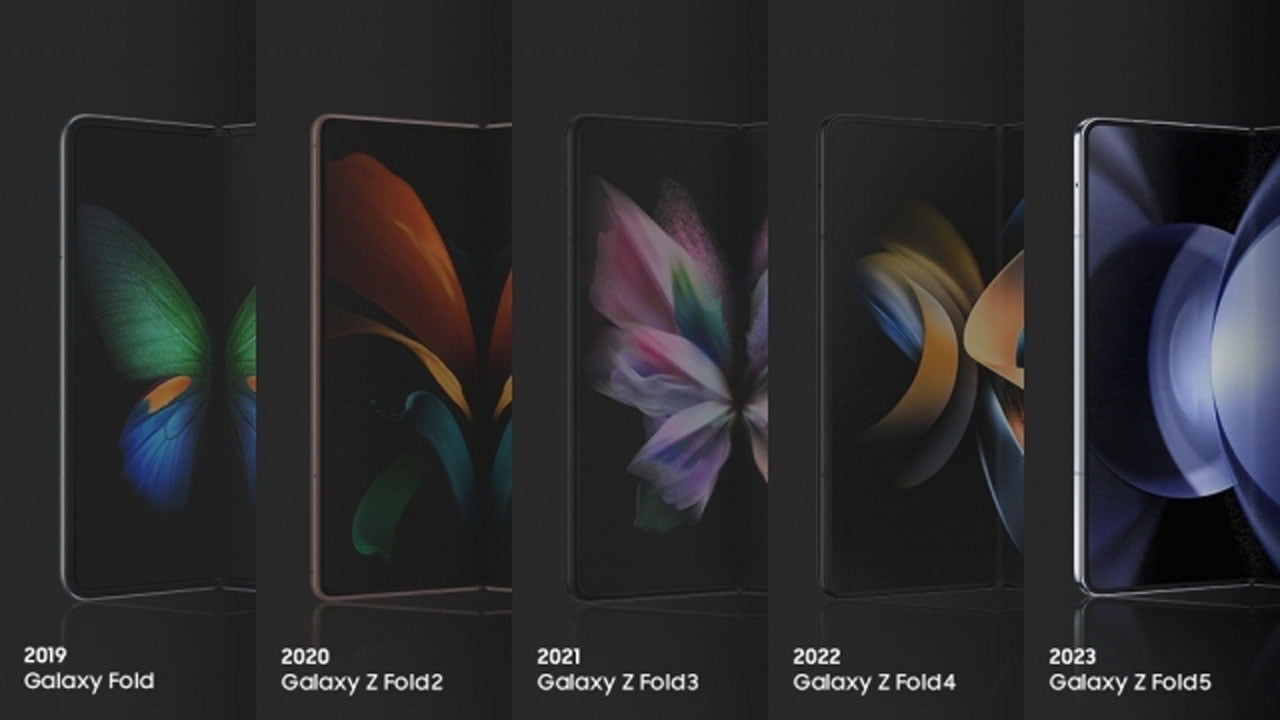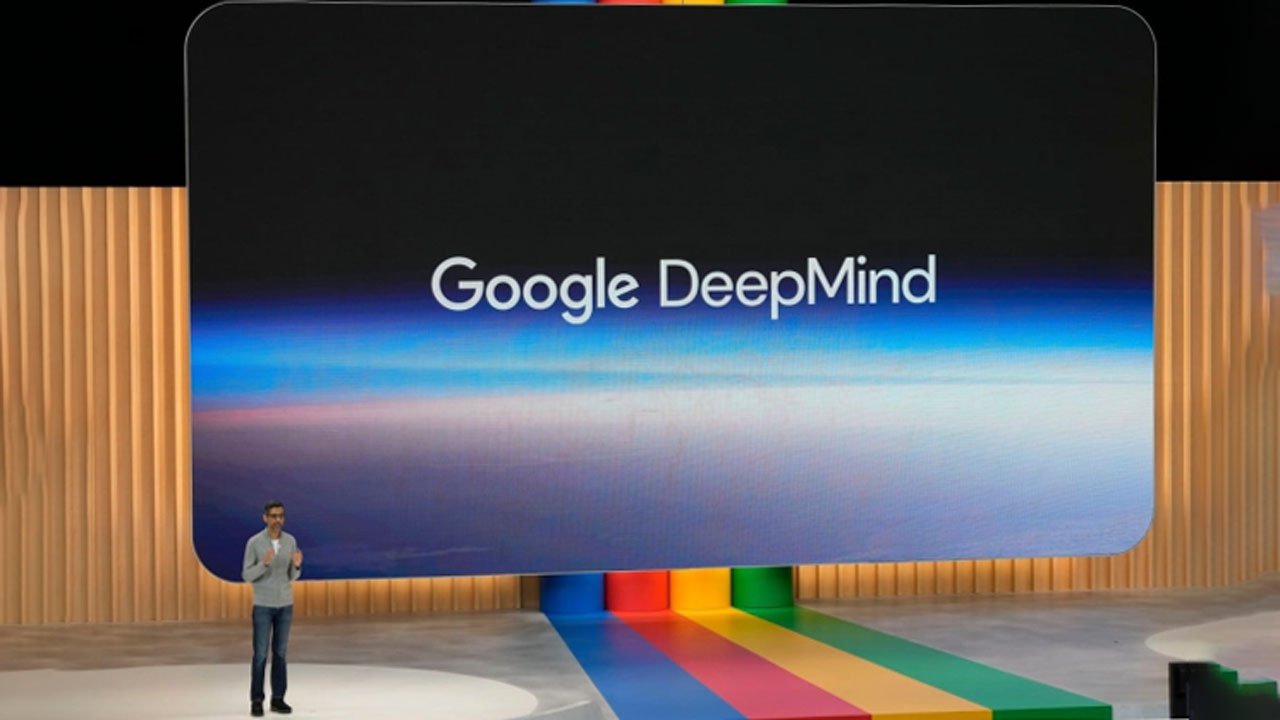Let’s Catch NVIDIA Google, Intel, & Qualcomm Create AI Software Together

There is a movement in the global IT (information and communications) industry to counter the enormous influence of the U.S. Nvidia in the field of generative artificial intelligence (AI), Create AI Software. NVIDIA dominates both hardware (AI semiconductors) and software (AI development language and platform) technologies that are essential for building AI models and developing AI services. Companies in the AI field use AI semiconductors produced by NVIDIA and use NVIDIA’s software when creating AI-related programs. Nvidia’s global market share in this field exceeds 80%.
As the AI industry develops, AI companies’ dependence on NVIDIA will inevitably increase. In order to block Nvidia’s monopolistic influence, not only major global investors but also big tech companies that are busy competing with each other are working to build a united front against Nvidia. Their goal is to build a new ‘AI infrastructure’ that will replace Nvidia’s hardware and software.
Nvidia targeted by big techc According to Reuters on the 25th (local time), major technology companies such as Google, Intel, Qualcomm, Samsung Electronics, and ARM are promoting new software projects to compete with Nvidia’s AI development software ‘CUDA’. ‘AI development software’ plays the role of programming AI so that it can learn and infer various data. Previously, these companies formed the technology consortium ‘UXL (Unified Acceleration Foundation)’ last year. Through this, we are building ‘open source’ AI development software that can run on any hardware.
Nvidia’s ‘CUDA’ has served as a secret weapon that makes the company’s AI semiconductors irreplaceable. CUDA, released by NVIDIA in 2006, is considered to have the best performance among all currently existing AI development software. It has become an ‘industry standard’ as more than 4 million developers around the world use it. There is no usage fee for CUDA, but it has a major limitation in that it runs only on NVIDIA’s semiconductors. Even if US AMD and semiconductor startups release new products that match Nvidia’s AI semiconductor performance, CUDA cannot be used in these semiconductors. Ultimately, developers familiar with CUDA will choose NVIDIA AI semiconductors.
The big tech alliance aims to release powerful AI development software that can replace CUDA. In particular, the key point is that it can run on a variety of semiconductors, allowing AI development without using NVIDIA semiconductors. The plan is to complete basic technology development by the end of this year. UXL is also requesting participation in the project from Amazon and Microsoft (MS). “We are showing developers a way out of NVIDIA’s AI platform,” said Vinesh Sukumar, head of AI and machine learning at Qualcomm.
AI semiconductor competition is also fierce
With the possibility of a new AI development platform replacing the industry standard CUDA, competition in AI semiconductor development is expected to become more intense. There have been many analyzes that the company will not be able to catch up with Nvidia, which has CUDA, through the development of high-performance semiconductors alone, but the story will change once software dominance is broken.
Currently, NVIDIA’s AI semiconductor ‘H100’, which is the most in demand in the world, is in short supply and is being traded at a high price of $25,000 to $40,000 (approximately 33 to 53 million won) each. If NVIDIA’s monopoly system collapses due to the development of alternative software and the emergence of high-performance AI semiconductors, AI semiconductor prices are expected to fall rapidly.
There are many companies eagerly targeting the AI semiconductor market dominated by Nvidia. America’s largest competitor, AMD, launched a powerful AI chip ‘MI300X’ that surpasses NVIDIA’s H100 in December last year, and Amazon and Google are producing AI semiconductors for their own data centers. Sam Altman, CEO of OpenAI, a leader in the generative AI industry, plans to attract up to $7 trillion (approximately KRW 9,400 trillion) in investment to build its own semiconductor supply chain.
SoftBank, led by Chairman Masayoshi Son, is also preparing $100 billion (approximately 134 trillion won) in funds to supply AI semiconductors to compete with Nvidia. This project is called ‘Izanagi’, which means ‘god of creation and life’ in Japanese. A tech industry official said, “If UXL actually succeeds in developing software to replace CUDA and attracts customers, NVIDIA’s position could be greatly shaken.” “There is also a risk that NVIDIA’s stock price, which has soared nearly 260% over the past year, will collapse at once.” “There is,” he said.
See More:
Samsung To Japan, Apple To China Big 2 Smartphones Targeting Rough Terrain
Intel And AMD Excluded From Government Agencies China To Phase Out US Semiconductors



Leave a Comment